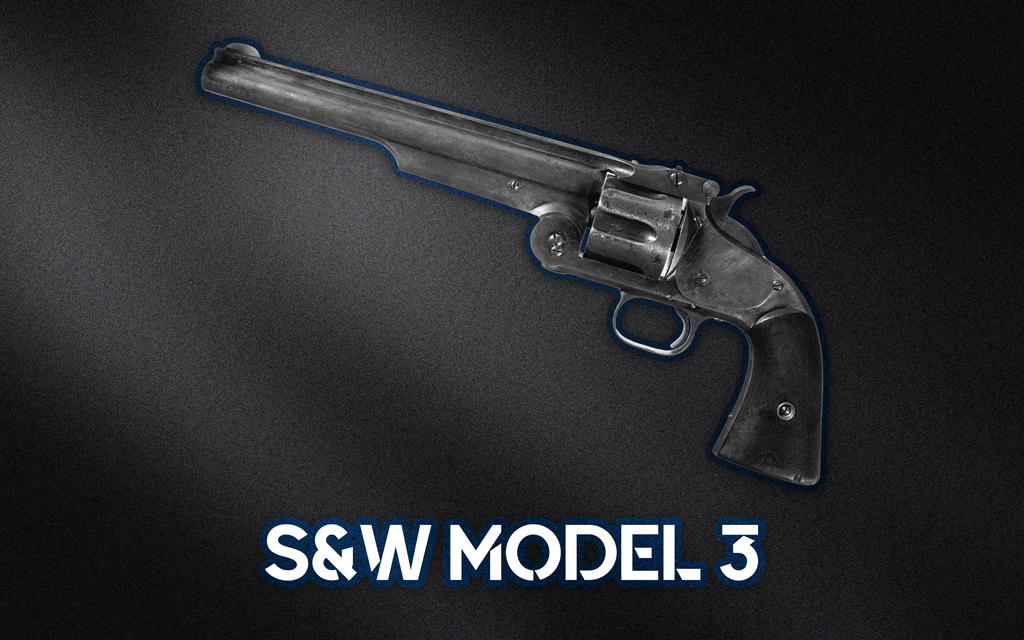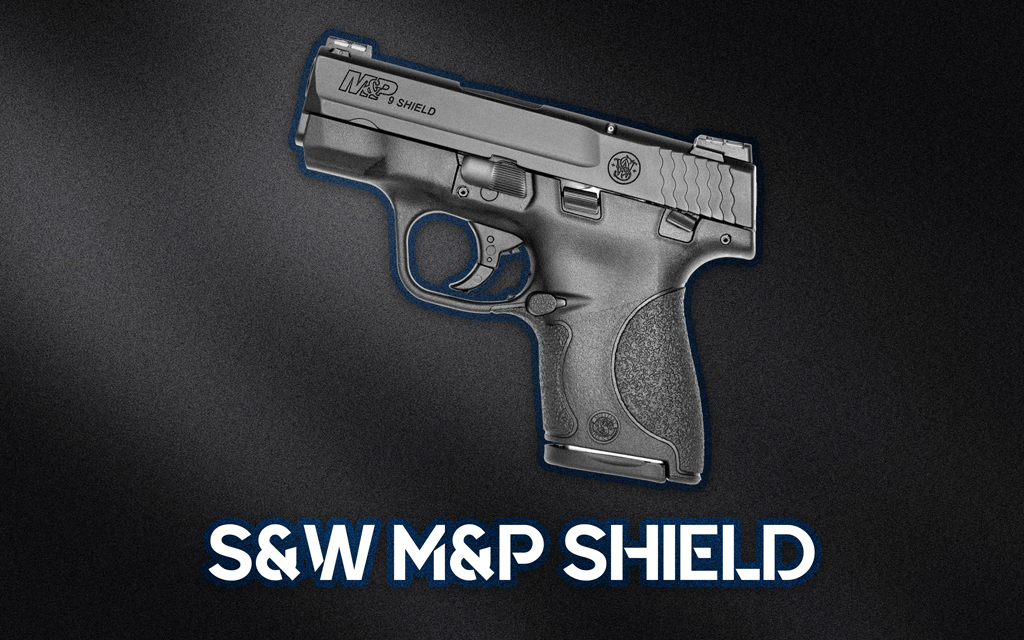

Founded in 1852 by Horace Smith and Daniel B. Wesson, Smith & Wesson has become one of history’s most iconic firearms manufacturers. Known for its groundbreaking revolvers and commitment to innovation, Smith and Wesson history has had a significant influence on the design and culture of firearms.
This article explores Smith & Wesson’s rich history, from its humble beginnings to its worldwide impact on law enforcement, the military, and enthusiasts.
The Founding of Smith & Wesson
Horace Smith and Daniel B. Wesson were pivotal figures in the evolution of American firearms. They partnered in Norwich, Connecticut, to create a lever-action repeating pistol. Their collaboration led to the development of a .41 magazine pistol called “The Volcanic” in 1854. It was the first repeating American firearm capable of using a fully self-contained cartridge.
Despite financial challenges and limited commercial success with their initial products, their innovation laid the groundwork for future advances in firearm technology.
After economic difficulties in 1856, they sold the company to Oliver Winchester, who reorganized it as the Winchester Repeating Arms Company. Unfazed, Smith & Wesson used their experience to establish Smith & Wesson in Springfield, Massachusetts. This new venture focused on revolving pistols, and they achieved significant success with the Model 1, a .22-caliber, 7-shot, small-frame revolver designed in 1857 for the newly patented .22 rimfire cartridge.
Smith & Wesson’s relentless innovation secured its legacy, significantly impacting firearm design and manufacturing. Their story is of perseverance, creativity, and a deep understanding of the firearms market. Still, their timing in reestablishing the company, just before the beginning of the American Civil War, was key to increased demand for revolvers that fueled their expansion.
Company Growth During the Civil War

The Volcanic: A lever-action, tubular magazine-fed pistol, holding 6 rounds when chambered in .41 caliber.
One of the most popular pistols during the American Civil War was the Smith & Wesson Model 2. The No. 2 was popular with soldiers, who purchased them privately for a metallic cartridge handgun. Union cavalry general and infamous Indian fighter George Armstrong Custer owned a pair of these, and the legendary “Wild Bill” Hickok was carrying one as he was shot and killed during an 1874 poker game in Deadwood, Dakota Territory.
Smith & Wesson produced over 75,000 Model No. 2 pistols between 1861 and 1874. In addition to rosewood grips and a blue or nickel finish, these revolvers were available with a 4-, 5-, or 6-inch barrel. The company became so profitable during the war that the two partners were the wealthiest men in Springfield by 1865.
Of course, the Model 1 revolver was popular among soldiers and officers during the war because of its compact size and .22 rimfire cartridges, which made it a practical sidearm. The demand for dependable firearms increased as the war intensified, resulting in significant growth for Smith & Wesson.
War Encourages Innovation
The Civil War spurred rapid technological advancements and increased production capabilities in the firearms industry. Smith & Wesson expanded its manufacturing processes to meet the soaring demand. The company refined its revolver designs to ensure quality and performance under harsh battle conditions. As a result, they cemented a reputation for producing reliable firearms during this period.
The proliferation of Smith & Wesson revolvers among soldiers also had post-war implications. Returning veterans, who were familiar with the reliability and effectiveness of these firearms, continued to purchase them for personal use, bolstering the company’s market presence and helping them establish a foothold in the expanding civilian firearms market.
The Civil War significantly contributed to Smith & Wesson’s expansion by creating a demand for efficient and reliable firearms. The company met these demands while maintaining a reputation for quality, solidifying its influence in the firearms industry and paving the way for future innovations and market growth.
Smith and Wesson History: 19th Century Expansion

Model 3: A single-action, large frame, top-break revolver introduced around 1870 in a variety of calibers.
By the end of the 19th century, Smith & Wesson was experiencing considerable expansion and growth, driven by their commitment to innovation and adaptation to evolving market needs. Building on their success during the Civil War, the company capitalized on the post-war demand for domestically and internationally reliable firearms.
One of the key technological advancements during this period was the development of double-action revolvers. Smith & Wesson introduced this feature in their revolvers, allowing the shooter to fire rounds in quicker succession without manual cocking between shots. This innovation enhanced the speed and efficiency of firearms, appealing to both military and civilian users.
Smith & Wesson also capitalized on the global market by securing contracts with foreign governments, further extending its reach and reputation. The Russian Model revolver, designed for the Russian military, demonstrated the company’s ability to tailor products for international clients.
Smith & Wesson introduced larger caliber and frame revolvers as the century progressed. In 1870, the company shifted its focus from pocket-sized revolvers to the heavier-caliber .44 S&W American. The U.S. Army adopted this new design and called it the Smith & Wesson Model 3. It became the first cartridge-firing revolver in U.S. service.
In 1899, the company introduced its most widely used revolver, the .38 Military and Police. Known as the Smith & Wesson Model 10, it became the standard sidearm of American police officers for much of the 20th century. They produced 6 million Model 10 pistols, with an additional one million for the U.S. Military during World War II.
20th Century: Challenges and Achievements

The Smith & Wesson brand has always been known for its creative and often evocative ads.
World Wars I and II profoundly impacted Smith & Wesson, driving significant shifts in production and innovation. During World War I, they ramped up firearms production to meet military demands, producing the iconic .45-caliber Model 1917 revolver for the U.S. military. This revolver supplemented the standard-issue M1911 pistol with its reliable performance.
The company’s experience during World War I laid the foundation for further advancements and strategic approaches that would become vital during the Second World War. In 1934, Smith & Wesson introduced the .357 Magnum. This model quickly grabbed the interest of law enforcement agencies confronting more treacherous and better-armed criminals. It features a smokeless powder cartridge with a .357-inch bullet diameter and is renowned for its exceptional stopping power. For some 20 years, the .357 Magnum retained the title of the world’s most powerful handgun cartridge.
With the outbreak of war in 1941, Smith & Wesson again prioritized military contracts. This resulted in a significant increase in their firearm production. They manufactured over 1 million revolvers for the Allies, including the Victory Model, which became a standard sidearm for U.S. and British forces.
Beyond increased production, the wars stimulated innovation. The need for efficient, reliable firearms under wartime conditions drove Smith & Wesson to improve its manufacturing techniques and materials. This period featured advancements in metallurgy and machining processes, which enhanced the durability and performance of firearms.
After World War II, Smith & Wesson leveraged these innovations in the civilian market, offering improved products that benefited from wartime advancements. The wars fundamentally shaped the company’s production capabilities and technological insights, positioning it as a key player in the firearms industry with a reputation for quality and reliability that extended well beyond the battlefield.
The Modern Era and Innovations

M&P Shield: The slim, lightweight, striker-fired polymer pistol took the concealed carry world by storm.
In recent years, Smith & Wesson has continued to evolve. They’ve focused on integrating new technologies, expanding product lines, and addressing modern manufacturing challenges. Recognizing the importance of innovation, the company embraces advanced materials and manufacturing techniques to enhance the performance and durability of its products.
One notable development is incorporating modern materials such as polymer, which creates lightweight and durable frames. This shift reduced the weight of firearms, improving resilience and ergonomics, and catering to a diverse customer base. Additionally, Smith & Wesson has invested in precision engineering technologies, including CNC machining and laser cutting, which allow for tighter tolerances and improved accuracy in their firearms.
Expanding product lines has also been a key focus. In 2005, Smith & Wesson introduced the M&P (Military and Police) series, a line of semi-automatic pistols and rifles for professional and civilian use. This series has been well-received for its reliability, ease of use, and advanced safety features.
Some of the Series’ most noteworthy entries include:
- M&P Shield: A slim, concealable, lightweight, striker-fired polymer pistol.
- M&P M2.0: A new design featuring upgrades to nearly every aspect, including trigger, grip, frame, and finish.
- M&P380 Shield EZ: Developed to be easy to load, easy to rack, easy to shoot, easy to pack, and easy to clean.
- M&P Shield Plus: Designed for concealed carry, the Shield Plus features a magazine capacity of up to 13 rounds in a slim, micro-compact frame.
Addressing manufacturing challenges, Smith & Wesson implemented lean manufacturing principles and automation to increase efficiency and reduce waste. This approach streamlines production, ensuring consistent quality and faster turnaround times.
Furthermore, Smith & Wesson remains committed to meeting consumer demands by offering customizable options. These included interchangeable grips and sights, allowing users to tailor firearms to their preferences. Through these strategies, Smith & Wesson maintains its legacy while adapting to the changing needs of the modern market.
Legacy: Smith and Wesson History

Smith and Wesson history: For over 170 years, S&W’s legacy of innovation continues to empower firearms owners.
Since its founding in the mid-19th century, Smith & Wesson has been renowned for innovation and reliability. The company revolutionized firearm design by developing the first cartridge revolvers and later introducing double-action mechanisms, thereby setting industry standards. Their role in arming military and law enforcement agencies during significant conflicts, such as the Civil War and the two World Wars, cemented their reputation for quality and dependability.
Today, Smith & Wesson remains a leading firearms manufacturer. They’re renowned for their diverse product range, which includes popular lines such as the M&P series. The company’s emphasis on integrating modern technologies and addressing consumer needs ensures its competitive edge. Smith and Wesson’s history of innovation continues to shape its influential position within the global firearms industry.


